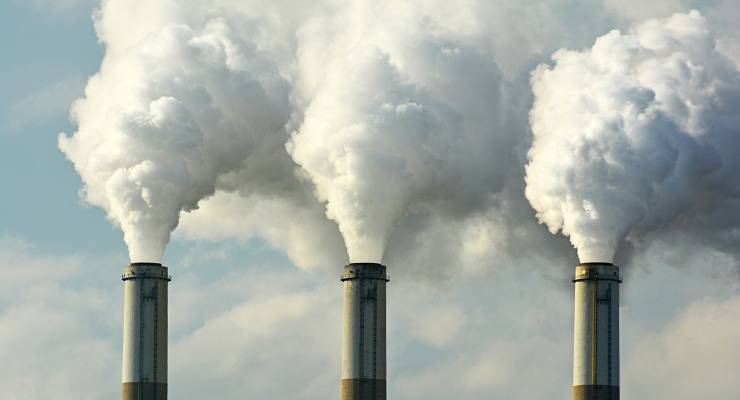
Countries have been lying to the United Nations about their greenhouse gas emissions.
Malaysia has claimed its trees are absorbing carbon four times faster than neighbouring Indonesia; Vietnam reported fluorinated gases emissions are 99.8% lower than other key scientific emissions data sets; the Central African Republic said its land absorbed enough carbon dioxide to offset the annual emissions of Russia; and Australia underreported its 2016 emissions of nitrous oxide gas by a factor of four to seven.
Underreporting of greenhouse gas emissions means the world is in a more dire place than thought, a Washington Post investigation has revealed.
But emissions aren’t all that nations — and companies — are lying about. Here are some of the key examples of outright dishonesty and broken promises when it comes to climate targets.
$100 billion climate finance
In 2009, developed countries pledged US$100 billion annually in climate finance to help developing countries adapt to climate change. This wasn’t supposed to be charity, but reparations for the decades of emissions causing rising sea levels, extreme weather events and environmental devastation.
The money was supposed to be provided every year from 2020 to 2025. OECD countries missed that goal, providing just US$80 billion in 2020 with no formal deal on how much each country should pledge struck,
In a statement late last month, OECD secretary-general and former Australian minister for finance Mathias Cormann said there were a “variety of factors” that will influence when that cash will arrive, but that it was “vital for developing countries to have a good understanding of developed countries’ intentions [ahead of COP26]”.
Developing nations and environmental groups aren’t having a bar of it, demanding the targets be met and even more pledged as evidence of the drastic impact of climate change grows.
Head in the sand on megafires
The devastating bushfires of 2019 and 2020 burnt 18.6 million hectares of land, including 37% of NSW’s state national parks. It’s estimated around 830 million tonnes of carbon dioxide was emitted.
But Australia is removing these emissions from its annual totals. Australia’s Department of Industry, Science, Energy and Resources has argued it uses a “smoothing process” to draw trends out of its forests over time using “an exploration of newly emerging modelling techniques”.
Carbon capture and storage
One of Australia’s leading “climate policies” centres around climate capture storage — an initiative led by fossil fuel companies that claim facilities could capture C02 and stop it from being released into the atmosphere.
But at full capacity, facilities are only capturing around 30% of emissions instead of the intended 80%. Despite the abysmal results, Australia this year pumped $263.7 million into the program, on top of the previous $1.3 billion given to fossil fuel companies. Embarrassingly, oil and gas company Santos featured prominently at Australia’s pavilion at the COP26 climate summit in Glasgow.
Kyoto carryover credits
In 2019, Australia attempted to dupe the system by using Kyoto carryover credits — historical emissions reductions that exceeded previous international targets — to meet its commitments under the Paris climate agreement. Brazil, India, and Ukraine soon attempted to follow Australia’s lead through the loophole.
Following immense international criticism, last year Prime Minister Scott Morrison proudly announced Australia would stop trying to cheat the system.








Scotty FM’s going to try to stop cheating the system? Another “miracle”?
Anyone that thinks that “governments govern for the people” have got coal-for-brains.
As old Abe did not say, “government of the people, by the corrupt, for their owners.”
Yes, I’ve been railing at a government of the the people by the corporations and for the corporations for years now, Since about 2013, in fact.
He thinks he (and his Party) are the system; no need to stop cheating himself.
The other emissions from bushfires that are not included in the National Carbon Accounting report are the annual dry season fires in the northern savanna. Each year about 25% of the savanna is burnt but the experts say that carbon emitted is taken up by regrowth during the wet! [Well that’s solved that problem]. No one wants to talk about increased wind and flood erosion or loss of biodiversity either.
Hi John. Why is it wrong to say that CO2 from burning Savanna is recovered when it regrows in the wet? My impression was that it is a closed carbon cycle, not a net contributor to emissions.
That literally made me LOL. I mean if you can’t laugh about this stuff it gets pretty depressing pretty quickly.
And ETS scams..sorry, schemes won’t be rorted.
BTW – “…Australia’s leading “climate policies” centres around climate capture storage…”?
On Monday, Owngas Taylor was telling PK on RN Drive what a great success CCS was, with Santos investing $200M in its WA project – would that be the $200M that Scummo gave them to invest in CCS?
Asking for an, as yet, unborn descendant.
“Finance to help developing countries adapt to climate change” should not mean cash, as it would instantly corrupt every middleman that stood between the fount of foreign money and the tropical farmers suffering in the fields. Instead of cash for “reparations”, it should be delivered as paid-up tools for adaption. The most obvious tools are fossil-free power and desalinating plants. Building these plants in the donor countries would make the donation more likely – both economies would benefit.
Gizza hint what those “…fossil-free power and desalinating plants…” would be.
Would they have 5 letters, starting with N ends in S and radioactive forever?
Phryne thinks we should be horrified at the idea of sending a nuclear power station to a developing nation as adaption. Of course it should be a nuke! When the wind drops, the sun goes down, the batteries go flat, users expect the backup to kick in, using fuel rather than trusting the weather. Now that that fuel must not be diesel or gas, what else can it be except nuclear? Would you rather it be emitting CO2?
Roger, I think the furphy of renewables not providing consistent and reliable power (with battery systems) has been firmly put to bed by all, except perhaps Keith Pitt and Anne Webster. Nuclear is (a) too expensive, (b) potentially explosive and inclined to radioactive leaks, and (c) not a sustainable technology.
“”Nuclear power is the most expensive, complex, inefficient, and dangerous way to boil water ever devised.”
https://www.theage.com.au/national/pm-unveils-nuclear-plans-20070429-ge4rpx.html